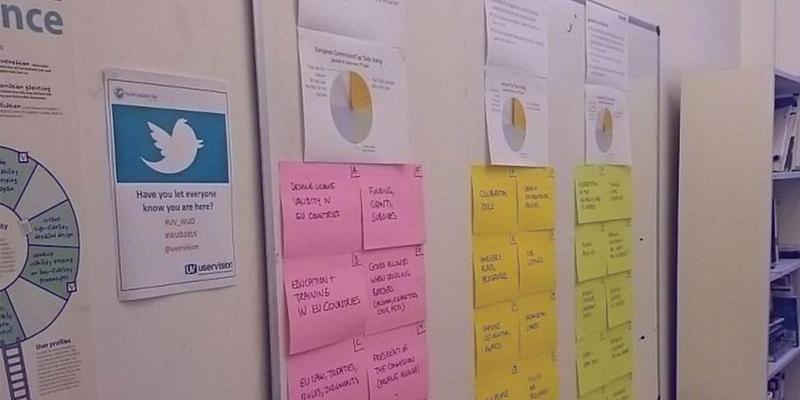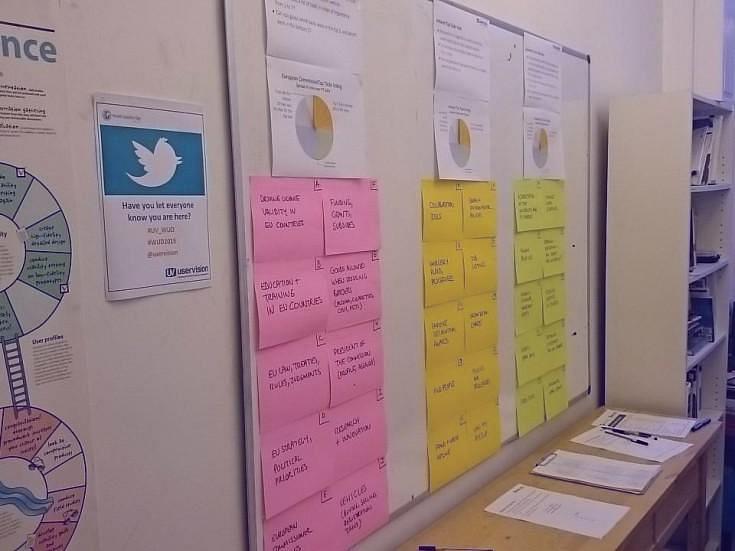World Usability Day – Top Tasks activity
1 December 2015 - Mark Crowley

Since my background is in Information Architecture (IA), I thought I would introduce our World Usability Day guests to what I think is an innovative technique for assessing user needs through the Top Task Identification method. Hopefully those that came learnt a lot, and for those that didn’t make it along here is a rundown of my activity.
What is it?
Top Task identification is a methodology used to reliably determine what people most want to do on a website or intranet by allowing site visitors to have their say. On a basic level, respondents are asked to select from a list in an online survey the tasks they personally feel as the most important for them when interacting with the site. It sounds simple, and surely all good websites have already done this? Surprisingly, they are in the minority. Most site IAs are built around internal views of the business, departmental priorities, and guesswork about what people want to do on websites. To demonstrate how opinions don’t always align with customer data, I came up with the following activity for our guests.
The activity
To visualise this problem I chose three examples that demonstrated the outputs of this methodology. To challenge our participants, I listed on our whiteboard both the Top 5 tasks and the Bottom 5 tasks (that received fewest votes in the surveys) from the three sample sites. We asked people to simply pick the top and bottom 5 from the 10 tasks displayed. Much to their surprise, only two succeeded in choosing the top 5 tasks on any of the sites.
One of the sites guests looked at was that of the European Commission (EC) (who went through this process in 2014(this will open in a new window)).

Takeaways
The key outcome from this exercise was that the top tasks – what people most want to do on a website – are not always obvious. To really know what your customers want, you need to ask them.
Our experiment showed that expertise in the digital domain is not a good indicator for predicting the needs of online customers on certain types of website. Those who tried our test were mainly experienced digital professionals. Most people got three correct, but from a list of only 10. The original survey on the EC website had 77 tasks, and if we had run this test with all 77 tasks, it’s quite possible that nobody would have picked the top 5.
One difficulty that our volunteers faced is that 65% of respondents to the EC survey were professionals rather than private individuals, so trying to predict the top tasks across such a diverse range was not easy. According to the EC(this will open in a new window), 43% were from the private sector, 34% in the public sector, and 11% in civil society, with roles such as Consultants, Engineers, and Managers. In this case, without data from site visitors it would be just about impossible to determine a hierarchy of user needs
On complex websites with extensive content, data from customers is the only way to work out what they really want to do. The Top Tasks methodology, now deployed on over 400 websites globally, has been proven over and over again to provide reliable evidence to inform the design of a customer-centric information architecture.
Thank you to all who took part. If anyone who wants to know more about this method or to have a general chat about their IA, please get in touch.
You might also be interested in...
Consumer Duty Compliance: Measuring Outcomes That Matter
4 March 2025Explore how financial services can move beyond traditional satisfaction metrics to master outcome measurement for Consumer Duty compliance. Learn about Key Experience Indicators (KEIs) and strategic approaches with User Vision's expertise.
Read the article: Consumer Duty Compliance: Measuring Outcomes That MatterWelcome to User Vision: Shaping Incredible Experiences
29 January 2025Discover User Vision: Your partner in human-centred design. We shape incredible digital experiences through expert UX research, accessibility consulting, and service design. Learn how our insight-driven approach can transform your digital offerings.
Read the article: Welcome to User Vision: Shaping Incredible ExperiencesCelebrating 25 Years of User Vision: Pioneering UX for a Transformative 2025
18 December 2024User Vision celebrates 25 years of UX leadership, offering insights on 2025's digital challenges. Discover how our expertise can transform your organisation's digital presence.
Read the article: Celebrating 25 Years of User Vision: Pioneering UX for a Transformative 2025